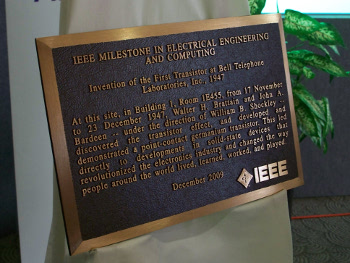Science-Mart
May 25, 2011
When I started
industrial research, my mode of operation was not unlike that of
university research. Although I was hired to do research in a product area of my employer, I was given considerable freedom on research direction. Digressions were common, provided that they didn't impede research in my designated area. I published many papers and presented at many conferences.
As the decades passed, industrial research went through considerable change. First, the number of support staff dwindled, which eroded the time available to me for "deep thought." Soon, the many plagues of
management theory, such as
Total Quality Management, consumed much more of my time. Research became more structured, and it was finally organized into "projects" with time-lines and milestones. Project funding cycles shrank from multi-year to a year or less.
Finally, industrial research disintegrated into the scenario that I described in a
previous article (Untouched by Human Hands, January 25, 2011).
Innovation was stifled, and I no longer published research papers. My last research publication was in 1995, five years before I retired. My experience was somewhat better than that of my friends at
Bell Labs. Bell Labs went though many changes a lot faster, finally becoming a shell of its former self.
There's one anecdote told by a Bell Labs acquaintance that summarizes much of what happened. A new management team was touring his facility, so he assembled a
laboratory show-and-tell exhibit of the exciting things his laboratory had done in prior years. He had just started to explain these items, when he was rudely interrupted and told, "We're not interested in what you did last year. We're only interested in what you'll do for us this year." I guess the wisdom of the expression, "
What's past is prologue," eludes the
bean counters.
This evolution of workstyle, not just in
science and technology, but nearly all professions, was portrayed in the
BBC documentary, "
The Trap" by
Adam Curtis.[1] This trap is the idea that the world revolves around
performance targets and
quotas, and the immediate value of any enterprise can be reduced to a
mathematical expression. As stated in the documentary, it was a case of
out of the frying pan, into the fire.
"The attempt to liberate people from the dead hand of bureaucracy has led to the rise of a new and controlling system of management driven by targets and numbers."

Commemorative plaque marking the demonstration of the transistor at Bell Labs (click for larger view)
Would it be possible to invent the transistor today?
Photo by author, via Wikimedia Commons)
Philip Mirowski, Carl Koch Professor of
Economics and the
History and Philosophy of Science at
Notre Dame, has just published a book, "Science-Mart," that summarizes the decline in US industrial research that my colleagues and I experienced.[2] Starting in the 1980s, just when I was establishing my research career, the US migrated from a model in which the government funded science as a
public good, to a model in which ideas were just another
commodity and a money-making enterprise.
University faculty became profit centers, and there was a growing collegiate administration that fed off their profits.
Corporations, using their near-term
financial models, decided that their in-house research operations were not profit centers, and they started to
outsource research. First, the outsourcing was to universities, where cheap student labor abounds, and then to other countries. Writes Mirowski,[3]
"My book Science-Mart seeks to call into question the entire amorphous movement to commodify and commercialize scientific research since the 1980s. To accomplish that, it provides... an exploration into the difficult question of whether and how much science has been harmed by the commercialization process; and a final meditation on why people are so inclined to believe the 'marketplace of ideas' is inherently efficient, when it might just as equally render people more stupid."
In this "marketplace of ideas," larger companies acquire smaller companies when they need technology. It also means that they acquire
patent rights from innovative individuals; although it's often the case that they will steal these ideas and drown the innovator in a sea of lawyers. It's much easier to quantify legal expenses than your
return on investment for research.
Is there any way for scientists to dig themselves out of this
pigeonhole that society has stuffed us into? Our only hope may be in the
private foundations that our modern day
robber barons have established as their
sin offering.
References:
- Adam Curtis, "The Trap: What Happened to Our Dream of Freedom," video via thoughtmaybe.com, April 12, 2010.
- Philip Mirowski, "Science-Mart: Privatizing American Science," Harvard University Press, (Cambridge, MA, April 1, 2011), 464 pages.
- Marshal Zeringue, "Philip Mirowski's 'Science-Mart'," page99test.blogspot.com, March 14, 2011.
Permanent Link to this article
Linked Keywords: Research and development; industrial research; university; research; management theory; Total Quality Management; TQM; innovation; Bell Labs; laboratory; show-and-tell; What's past is prologue; bean counter; STEM fields; science and technology; BBC; The Trap; Adam Curtis; performance targets; quota; equation; mathematical expression; out of the frying pan, into the fire; Wikimedia Commons; Philip Mirowski; economics; history and philosophy of science; Notre Dame; public good; commodity; corporation; financial model; outsourcing; patent; return on investment; pigeonhole; private foundation; robber baron; sin offering.